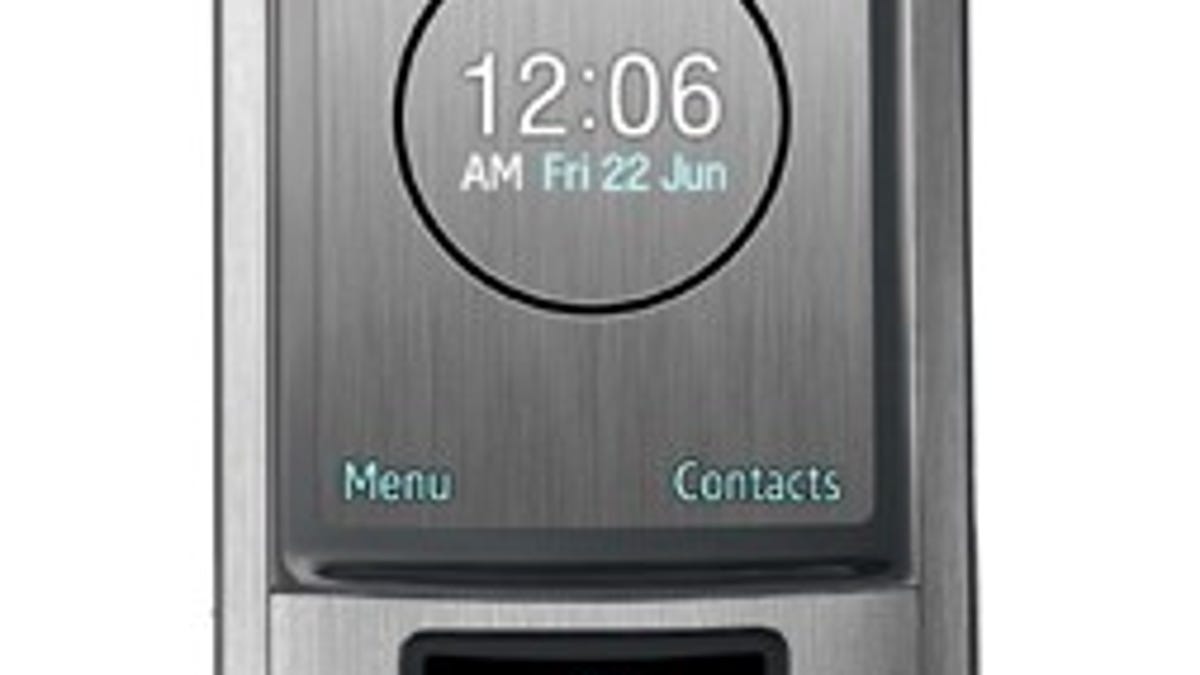GSMA Day 1 Wrap-Up
A wrap-up of Day 1 of the GSMA Mobile World Congress

February 11 has come and gone, and it turned out to be a busy first day at the GSMA Mobile World Congress in Barcelona, Spain. Before the show even began, Senior Editor Kent German gave us a little preview of the convention scene, and Bonnie Cha tells us her woeful tale of her stolen wallet. But work must go on, and Kent managed to get a hands on with the Samsung Soul, a slider handset packed with HSDPA, a 5-megapixel camera, and a new navigation pad with a display that changes its icons depending on what feature is being used.
Of course, one of the biggest news items out of GSMA this first day is that Google Android prototypes are finally showing up for people to see, and CNET News.com's Marguerite Reardon managed to get her hands on it. She gives us her first impressions, and what the Google people have to say about the future of the Android platform.
Back on the new phone trail, Sony Ericsson also debuted several phones, such as the incredibly slim Sony Ericsson Z770 with HSDPA support, the Sony Ericsson W980 Walkman phone with "shake" control, and a brand new G-series of phones with touchscreens. The G700 and the G900 "touch-screen organizers" sport the Symbian OS, while the G900 is more geared for photography thanks to its 5-megapixel camera. But Sony Ericsson's real camera phones are the C702 and the C902--the C702 has a 3.2-megapixel camera with 2x zoom, while the C902 has a 5-megapixel camera with 16x zoom. Sony Ericsson also dropped a smart phone bombshell--it's making its first ever Windows Mobile device, the Xperia X1, which has a QWERTY keyboard slider, plus support for HSDPA and HSUPA, as well as Wi-Fi.
Not to be left out, Nokia also knocked out a few phones of its own. The Finnish company's big announcement was the Nokia N96, a much more powerful version of the N95, with a 5-megapixel camera, 16GB of internal storage, a microSD card slot, a music player, quad-band support, and more. It's definitely sexier than the N95, but if you want to get one that is unlocked, it'll cost you about $780. Nokia also introduced the Nokia 6220, which has a 5-megapixel camera, 20x zoom, as well as Carl Zeiss optics. Other phones Nokia announced were the Nokia 6210 Navigator with built-in GPS, and the Nokia N78, which will be compatible with Nokia's Music Store and N-Gage mobile gaming platform. Finally, Nokia also debuted its Ovi photo-sharing service.
LG introduced the LG KF510, an absolutely gorgeous slider phone with tempered glass plus a 3-megapixel camera, as well as the KS20, a Windows Mobile phone that is all touchscreen (like the Prada). There's also the LG KT610, which has a QWERTY keyboard, as well as built-in GPS.
Though Motorola announced its commitment to the mobile phone industry, the company didn't have as many hot announcements. The Z6w looks like a Rizr clone, but it supports Wi-Fi plus a 2-megapixel camera, and a music player The W161 and W181 are two basic candy bar phones that are just phones.
On the tech news front, Microsoft announced that it will buy Sidekick maker, Danger, and Nvidia announced that it wants a piece of the mobile phone market with a standalone graphics processor made just for mobile phones coming next year. Mobile advertising start-up, JumpTap, said it will provide advertising and search services for seven TeliaSonera carriers in Europe, Cisco further defines its role in the mobile industry, and Texas Instruments has just made a new OMAP chip, and it's not only for mobile phones.
Stay tuned for the rest of the week for complete CNET coverage of the GSMA Mobile World Congress.

